关于跳跃连接你需要知道的一切
点击下方“AI算法与图像处理”,一起进步!
重磅干货,第一时间送达
目录
为什么需要跳跃连接? 什么是跳跃连接? 跳跃连接的变体 跳跃连接的实现
为什么要跳跃连接?
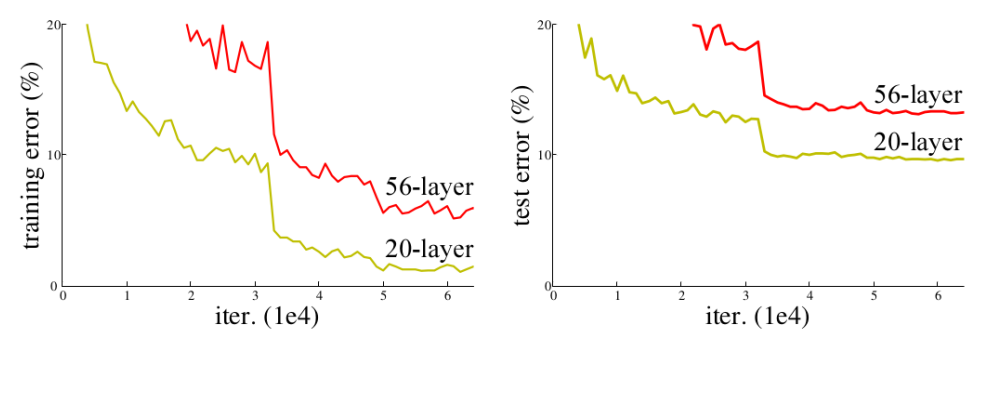
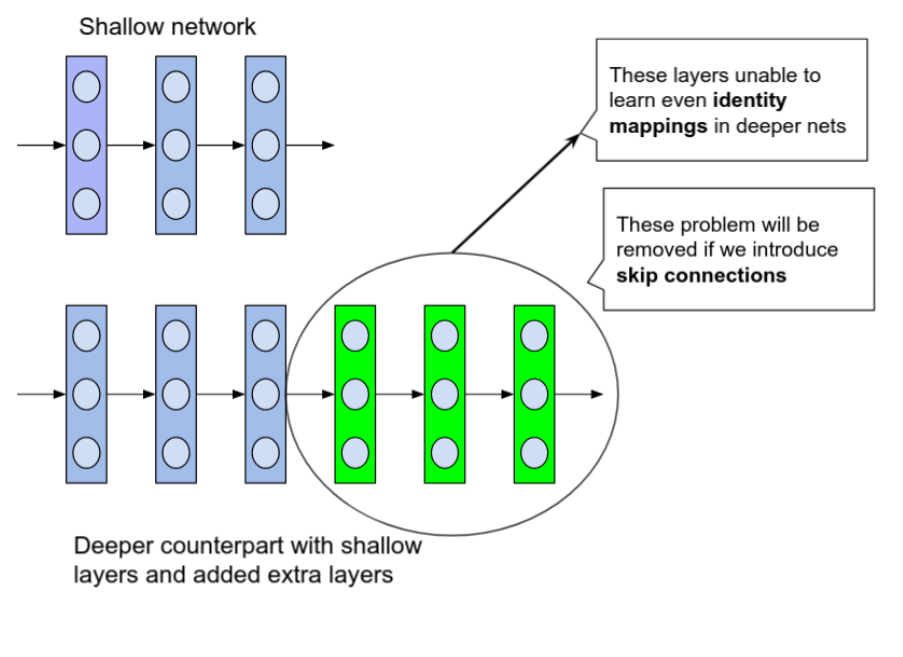
训练精度的下降表明并非所有系统都同样易于优化。
什么是跳跃连接?
顾名思义,Skip Connections(或 Shortcut Connections),跳跃连接,会跳跃神经网络中的某些层,并将一层的输出作为下一层的输入。
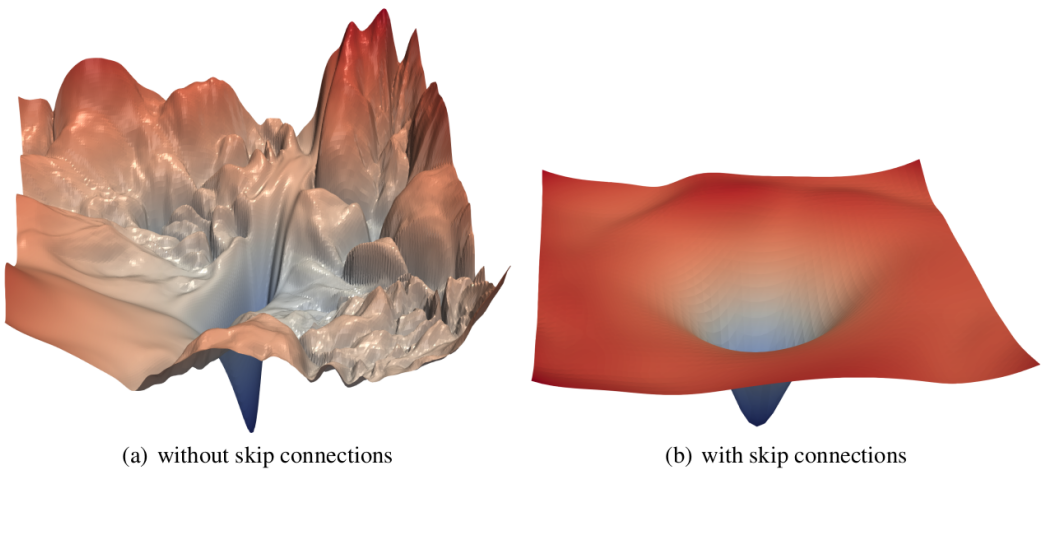
跳跃连接的变体
残差网络(ResNets)
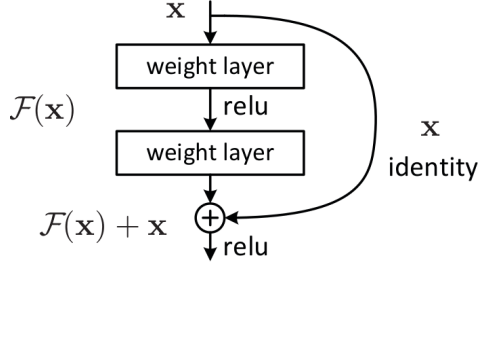
了解 ResNet 并分析 CIFAR-10 数据集上的各种模型:https://www.analyticsvidhya.com/blog/2021/06/understanding-resnet-and-analyzing-various-models-on-the-cifar-10-dataset/
卷积网络 (DenseNets)
谈到跳跃连接,DenseNets 使用串联,而 ResNets 使用求和
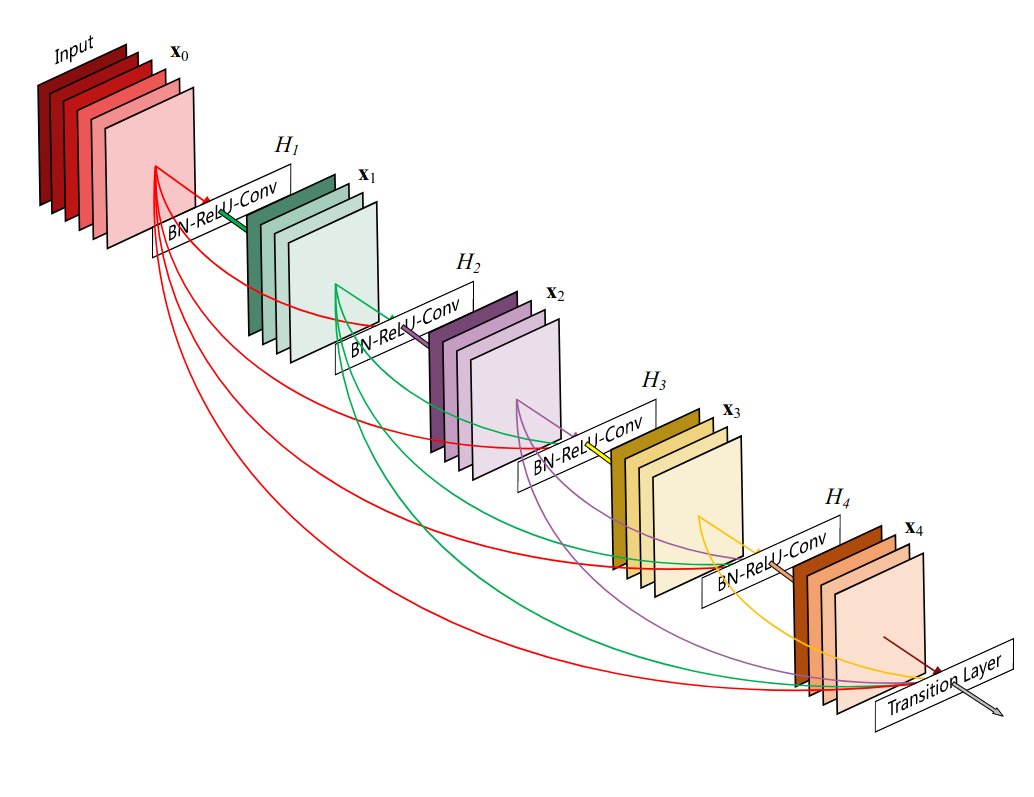
U-Net:用于生物医学图像分割的卷积网络
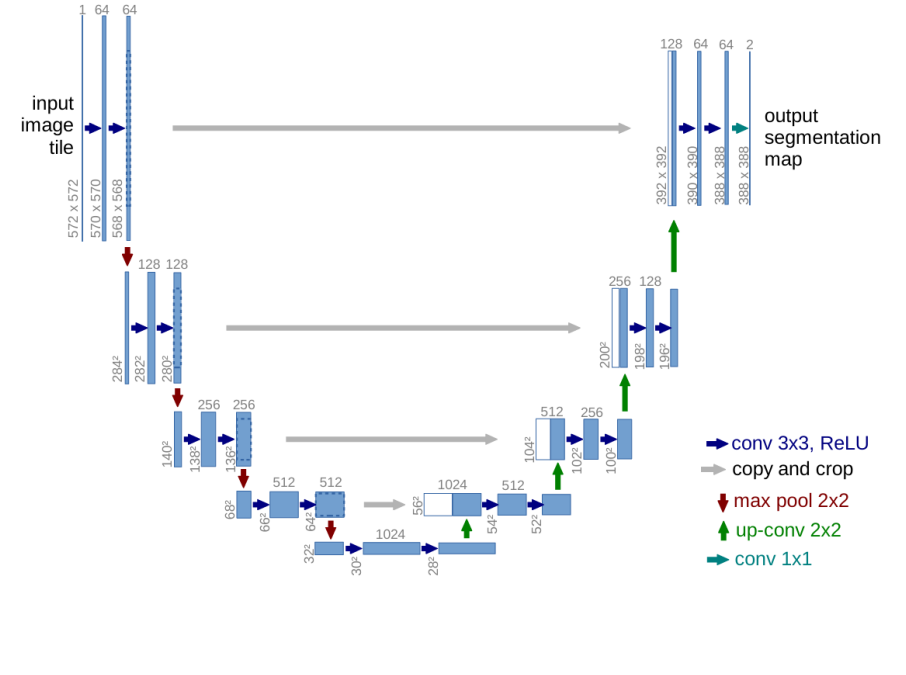
跳跃连接的实现
ResNet – 残差块
# import required libraries
import torch
from torch import nn
import torch.nn.functional as F
import torchvision
# basic resdidual block of ResNet
# This is generic in the sense, it could be used for downsampling of features.
class ResidualBlock(nn.Module):
def __init__(self, in_channels, out_channels, stride=[1, 1], downsample=None):
"""
A basic residual block of ResNet
Parameters
----------
in_channels: Number of channels that the input have
out_channels: Number of channels that the output have
stride: strides in convolutional layers
downsample: A callable to be applied before addition of residual mapping
"""
super(ResidualBlock, self).__init__()
self.conv1 = nn.Conv2d(
in_channels, out_channels, kernel_size=3, stride=stride[0],
padding=1, bias=False
)
self.conv2 = nn.Conv2d(
out_channels, out_channels, kernel_size=3, stride=stride[1],
padding=1, bias=False
)
self.bn = nn.BatchNorm2d(out_channels)
self.downsample = downsample
def forward(self, x):
residual = x
# applying a downsample function before adding it to the output
if(self.downsample is not None):
residual = downsample(residual)
out = F.relu(self.bn(self.conv1(x)))
out = self.bn(self.conv2(out))
# note that adding residual before activation
out = out + residual
out = F.relu(out)
return out
# downsample using 1 * 1 convolution
downsample = nn.Sequential(
nn.Conv2d(64, 128, kernel_size=1, stride=2, bias=False),
nn.BatchNorm2d(128)
)
# First five layers of ResNet34
resnet_blocks = nn.Sequential(
nn.Conv2d(3, 64, kernel_size=7, stride=2, padding=3, bias=False),
nn.MaxPool2d(kernel_size=2, stride=2),
ResidualBlock(64, 64),
ResidualBlock(64, 64),
ResidualBlock(64, 128, stride=[2, 1], downsample=downsample)
)
# checking the shape
inputs = torch.rand(1, 3, 100, 100) # single 100 * 100 color image
outputs = resnet_blocks(inputs)
print(outputs.shape) # shape would be (1, 128, 13, 13)
# one could also use pretrained weights of ResNet trained on ImageNet
resnet34 = torchvision.models.resnet34(pretrained=True)
DenseNet – 残差块
实现一个 DenseNet 层 建立一个残差块 连接多个残差块得到一个残差网络模型
class Dense_Layer(nn.Module):
def __init__(self, in_channels, growthrate, bn_size):
super(Dense_Layer, self).__init__()
self.bn1 = nn.BatchNorm2d(in_channels)
self.conv1 = nn.Conv2d(
in_channels, bn_size * growthrate, kernel_size=1, bias=False
)
self.bn2 = nn.BatchNorm2d(bn_size * growthrate)
self.conv2 = nn.Conv2d(
bn_size * growthrate, growthrate, kernel_size=3, padding=1, bias=False
)
def forward(self, prev_features):
out1 = torch.cat(prev_features, dim=1)
out1 = self.conv1(F.relu(self.bn1(out1)))
out2 = self.conv2(F.relu(self.bn2(out1)))
return out2
class Dense_Block(nn.ModuleDict):
def __init__(self, n_layers, in_channels, growthrate, bn_size):
"""
A Dense block consists of `n_layers` of `Dense_Layer`
Parameters
----------
n_layers: Number of dense layers to be stacked
in_channels: Number of input channels for first layer in the block
growthrate: Growth rate (k) as mentioned in DenseNet paper
bn_size: Multiplicative factor for # of bottleneck layers
"""
super(Dense_Block, self).__init__()
layers = dict()
for i in range(n_layers):
layer = Dense_Layer(in_channels + i * growthrate, growthrate, bn_size)
layers['dense{}'.format(i)] = layer
self.block = nn.ModuleDict(layers)
def forward(self, features):
if(isinstance(features, torch.Tensor)):
features = [features]
for _, layer in self.block.items():
new_features = layer(features)
features.append(new_features)
return torch.cat(features, dim=1)
# a block consists of initial conv layers followed by 6 dense layers
dense_block = nn.Sequential(
nn.Conv2d(3, 64, kernel_size=7, padding=3, stride=2, bias=False),
nn.BatchNorm2d(64),
nn.MaxPool2d(3, 2),
Dense_Block(6, 64, growthrate=32, bn_size=4),
)
inputs = torch.rand(1, 3, 100, 100)
outputs = dense_block(inputs)
print(outputs.shape) # shape would be (1, 256, 24, 24)
# one could also use pretrained weights of DenseNet trained on ImageNet
densenet121 = torchvision.models.densenet121(pretrained=True)
尾注
交流群
欢迎加入公众号读者群一起和同行交流,目前有美颜、三维视觉、计算摄影、检测、分割、识别、医学影像、GAN、算法竞赛等微信群
个人微信(如果没有备注不拉群!) 请注明:地区+学校/企业+研究方向+昵称
下载1:何恺明顶会分享
在「AI算法与图像处理」公众号后台回复:何恺明,即可下载。总共有6份PDF,涉及 ResNet、Mask RCNN等经典工作的总结分析
下载2:终身受益的编程指南:Google编程风格指南
在「AI算法与图像处理」公众号后台回复:c++,即可下载。历经十年考验,最权威的编程规范!
下载3 CVPR2021 在「AI算法与图像处理」公众号后台回复:CVPR,即可下载1467篇CVPR 2020论文 和 CVPR 2021 最新论文

评论
